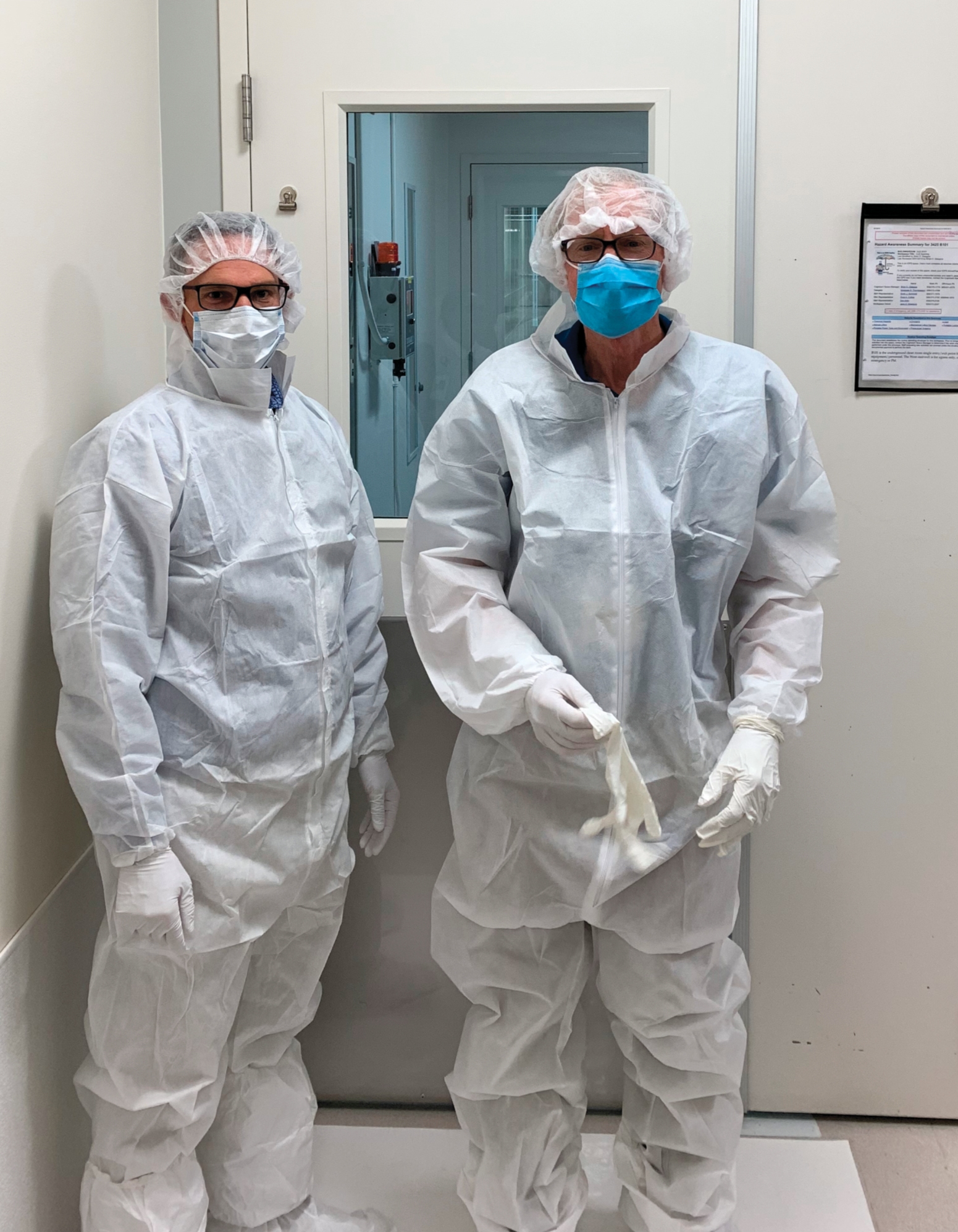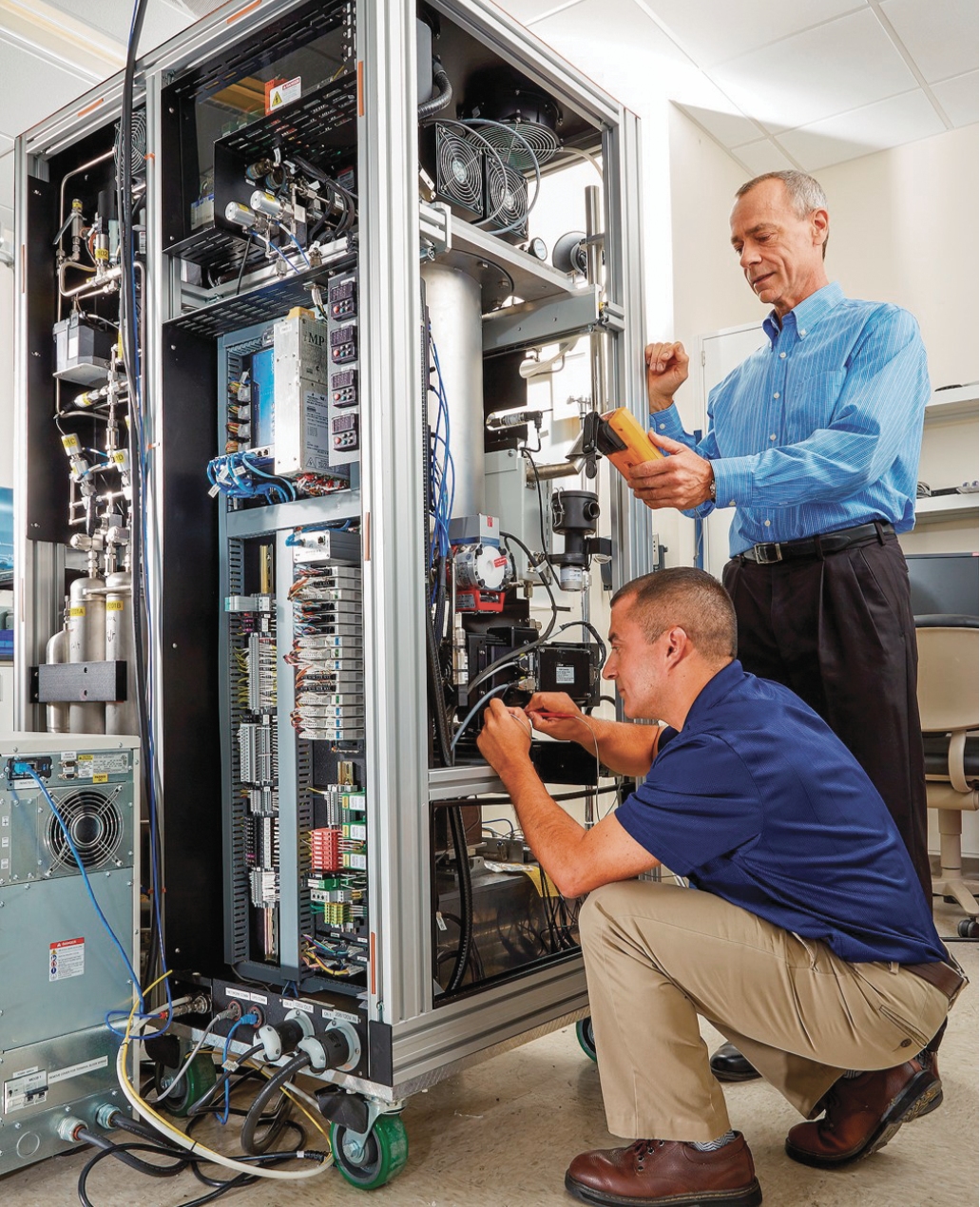Separating signal from noise to solve a nuclear puzzle
DOI: 10.1063/PT.3.4339
Ensuring compliance with the moratorium on nuclear testing, observed by all nations but North Korea, is the responsibility of the Comprehensive Nuclear-Test-Ban Treaty Organization (CTBTO). But its global international monitoring system (IMS) is sometimes confounded by the production of the medical isotope precursor molybdenum-99, which has a nearly identical radioactive signature to nuclear explosions. The problem is worsening as demand for technetium-99m, the most widely used medical radioisotope and the offspring of 99Mo, continues to grow.
The surest radioactive indicator that a nuclear test has recently taken place is the presence of radioisotopes of xenon in the atmosphere, says Ted Bowyer, a nonproliferation program manager at Pacific Northwest National Laboratory (PNNL). As a noble gas, xenon doesn’t interact with the environment and is more difficult to contain underground than other particulate fission products.
Home to the largest nuclear nonproliferation program in the Department of Energy’s national lab complex, PNNL in the 1990s developed the technology for xenon detection and analysis software used by CTBTO’s IMS. The lab and its industrial partner Teledyne Brown Engineering are developing a next-generation xenon monitor that Bowyer expects will replace many of the current IMS machines. Known as beta–gamma coincidence spectrometers, the instruments work by detecting the nearly simultaneous emission of a beta particle and a gamma ray that is the hallmark of radioxenon decays. A plastic scintillator detects the beta particles; a well holding sodium iodide is excited by gamma rays. The new detectors will be twice as sensitive as the previous generation and capable of analyzing more samples per day, he says.
Eighty IMS radioisotope-monitoring stations are spread around the globe (see the article by Matthias Auer and Mark Prior, Physics Today, September 2014, page 39

Bob Runkle (left), manager of signatures science and technology at Pacific Northwest National Laboratory, and the author suit up for a tour of PNNL’s shallow underground lab, where ultrapure copper parts are made for detection instruments.
PNNL

Half the IMS stations are equipped with xenon monitors. Several of them found unmistakable evidence for two of North Korea’s six nuclear tests that occurred between 2006 and 2017. Recognizing the other tests required careful analysis of weather data and sophisticated models developed at PNNL to sift out background interference.
Radioxenon is also emitted during other fission processes, and the world’s half-dozen 99Mo production reactors are the largest source. Their outsized contribution to the xenon background occurs when 99Mo targets, which contain uranium, are removed from reactors for immediate chemical processing. The sudden release of four xenon radioisotopes can be confused with a nuclear explosion. By contrast, radioxenon created in commercial reactors mostly remains locked inside spent fuel elements, and any reprocessing of spent fuel occurs well after xenon radioisotopes have decayed away.
Demand for 99Mo is forecast to increase by 1.5% a year, so its interference with nuclear detection will continue to worsen, Bowyer says. In the US alone, at least three companies may be starting new fission-based 99Mo production in the coming years. (Other US startups use nonfission processes; see “Competitors abound to produce key medical isotope
To better pin down the interfering emissions, the US government is offering to install source monitors at all 99Mo production sites. To date, reactors in Belgium and Australia have taken up the offer.
The lab is one of 16 facilities around the world that confirm analyses of IMS test samples, which are shipped in bottles. A system being tested at PNNL happened to be on at the time of the 2011 Fukushima nuclear disaster and was the first to find the radioxenon. From the plume’s content—100 000 times the radioxenon background—scientists were able to determine within several days that the fuel elements in the damaged reactors had ruptured. The Fukushima accident proved useful in helping PNNL to calibrate xenon dispersion models, says Bowyer. The IMS monitoring sites “all lit up like crazy” throughout the Northern Hemisphere and, a few weeks later, in the southern half of the globe, he says.

Pacific Northwest National Laboratory researchers Rey Suarez (left) and Jim Hayes developed the next-generation radioxenon detection system, called Xenon International, for uncovering evidence of clandestine nuclear explosions.
PNNL

The lab wasn’t involved in identifying the radioactive plume from an August 2019 accident at a Russian military site. Russia switched off the country’s four IMS stations following the accident, which was believed to have occurred during the development of a nuclear-powered cruise missile, to prevent the incident from being recorded, US officials alleged.
A happy connection
Some of PNNL’s detection expertise comes by virtue of its being adjacent to the Hanford Site, the main source of Cold War plutonium production, in southeastern Washington. “The science of nuclear fuel is our heritage,” says Jim Fast, a physicist and lab fellow. Other capabilities resulted from what Bowyer describes as “a happy connection between basic science and national security applications.” Roughly one-fifth of PNNL’s annual budget and programs are supported by DOE’s basic research arm, the Office of Science, which oversees the lab.
Fast, who spends about half his time on national security programs, initiated a small high-energy physics program at PNNL when he arrived in 2005. He had previously worked at Fermilab helping develop the shielding and cryogenic components for the Majorana Neutrinoless Double-beta Decay Demonstrator at the Sanford Underground Research Facility in South Dakota (see Physics Today, February 2013, page 19
Ensuring that the insides of detection instruments are kept free of naturally occurring radioisotopes such as potassium-40 and carbon-14 is critical for scientific research and treaty monitoring alike. To that end, PNNL electroforms ultrapure copper components used for instrument shielding and vacuum cryostats in a laboratory clean room located 12 meters underground.
The underground lab also houses one of two instruments in the world that can measure argon-39 at levels found in the environment, Fast says. Its half-life of 270 years and very low abundance make 39Ar difficult to measure, adds Fast. Researchers at the US Geological Survey use the instrument for radioargon dating of aquifer recharge rates. Argon that’s been underground in water for hundreds of years will contain less radioactive 39Ar than will the atmosphere. New groundwater will have slightly more of the radioisotope, which indicates a faster aquifer recharge cycle.
More about the Authors
David Kramer. dkramer@aip.org
